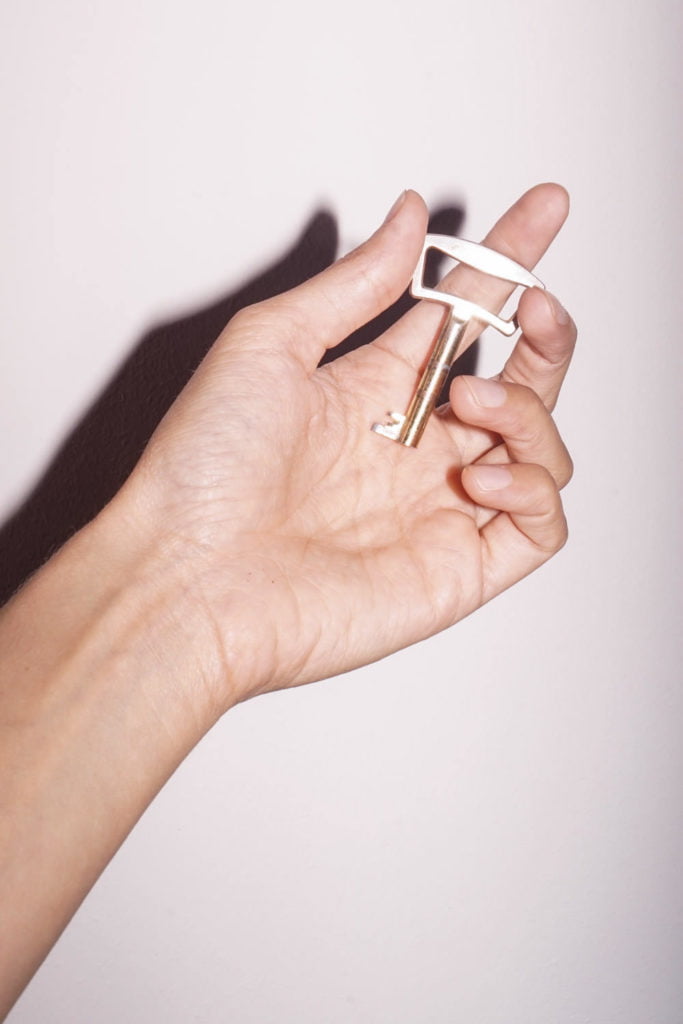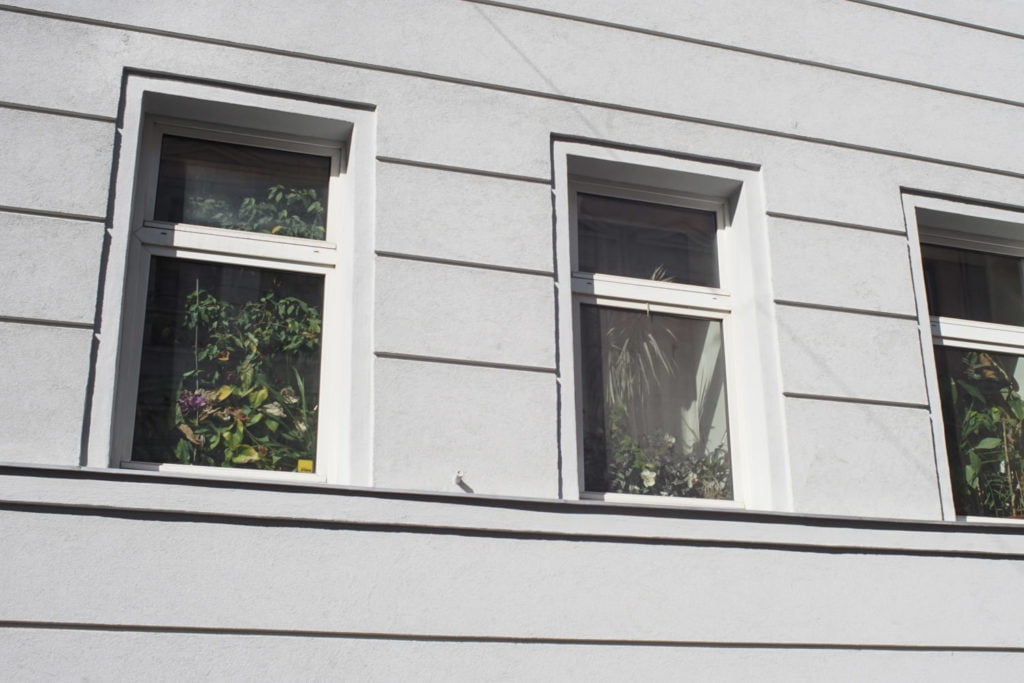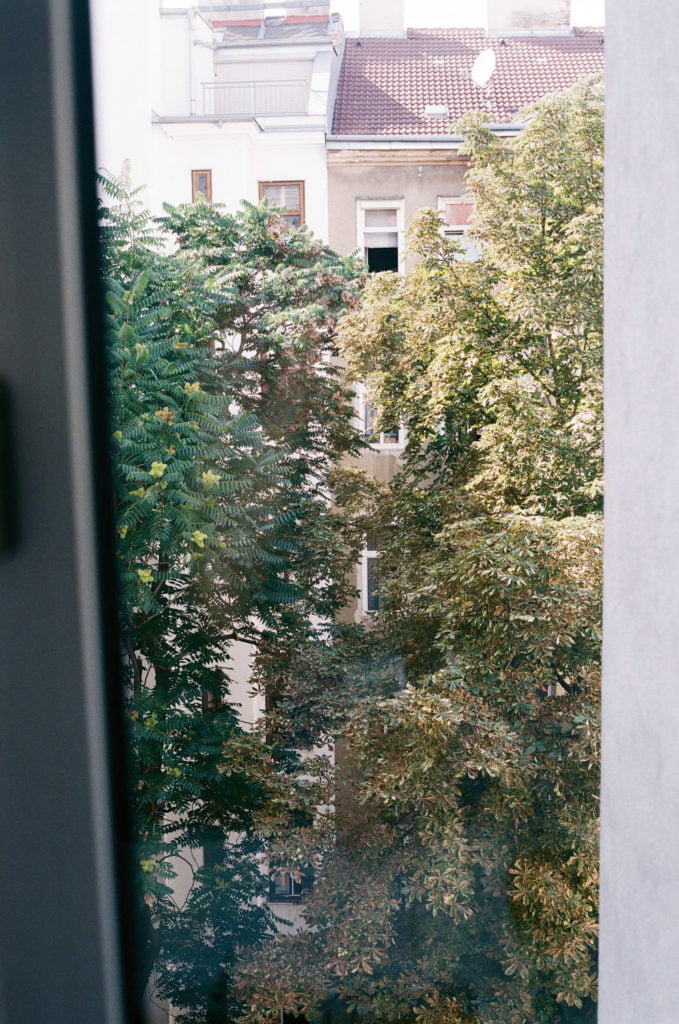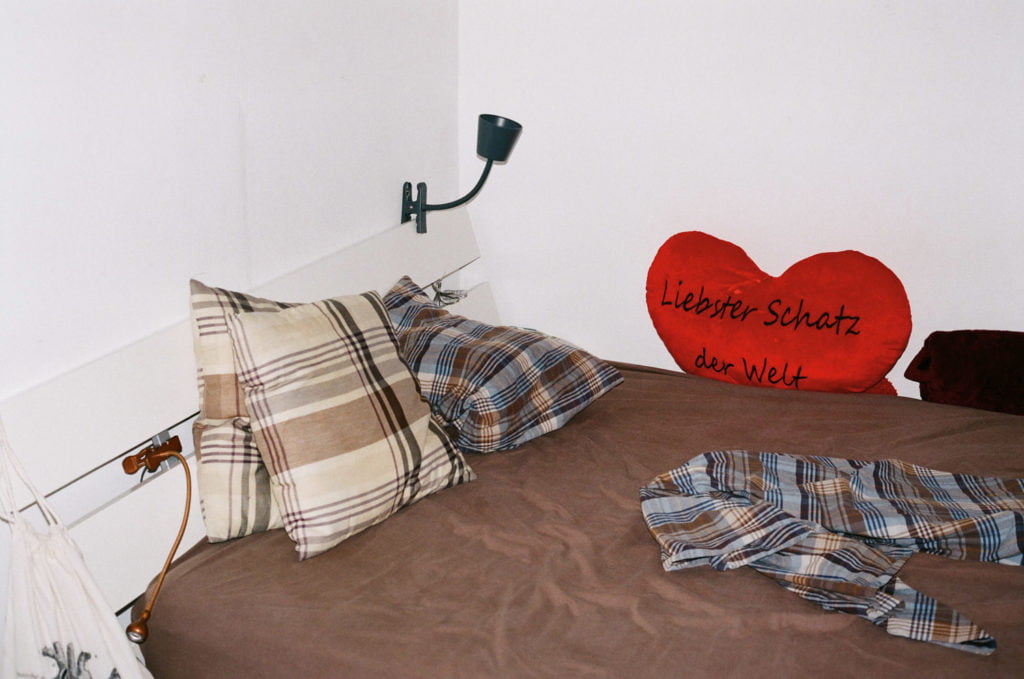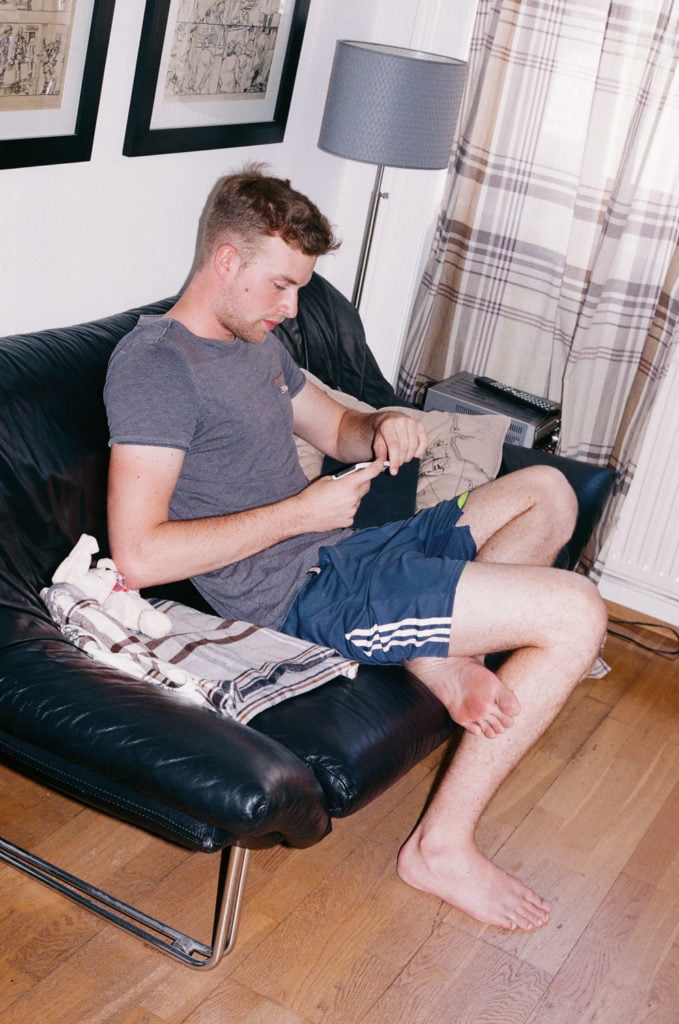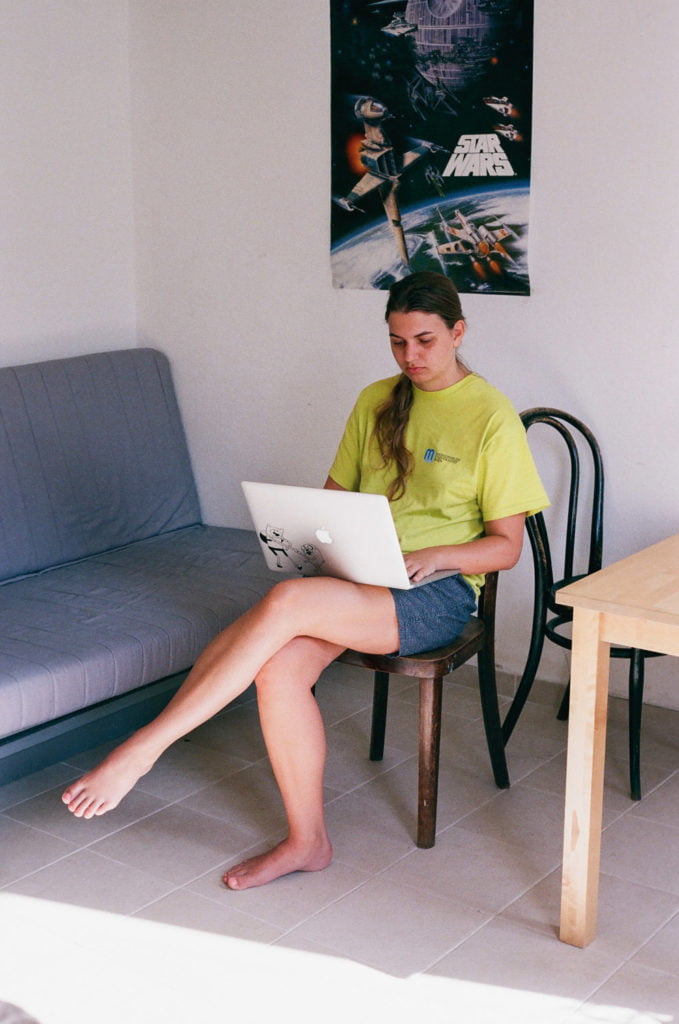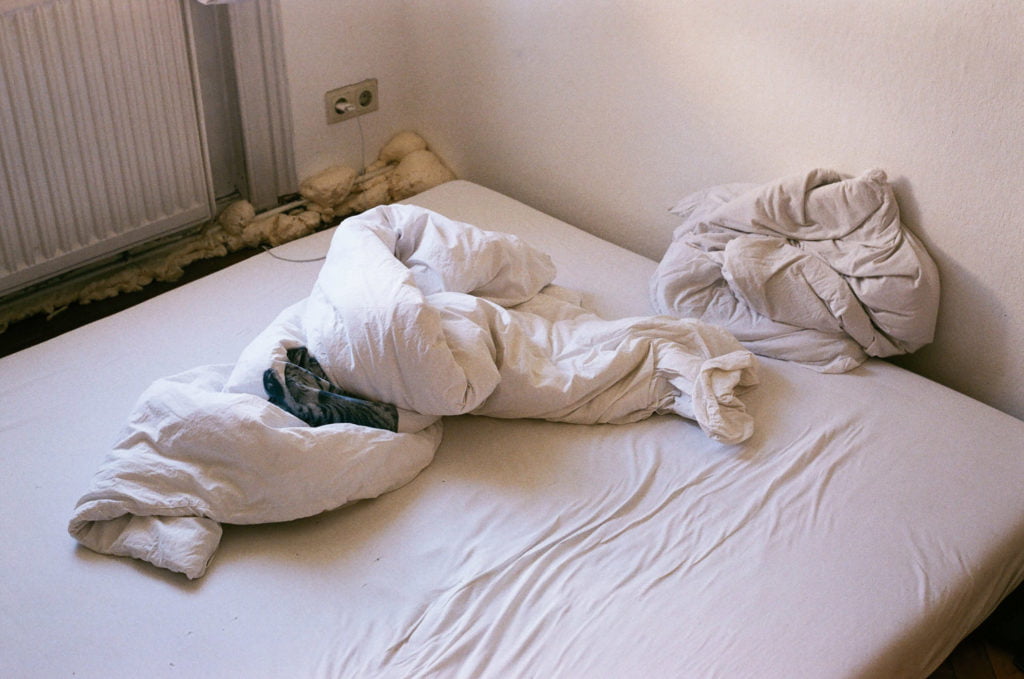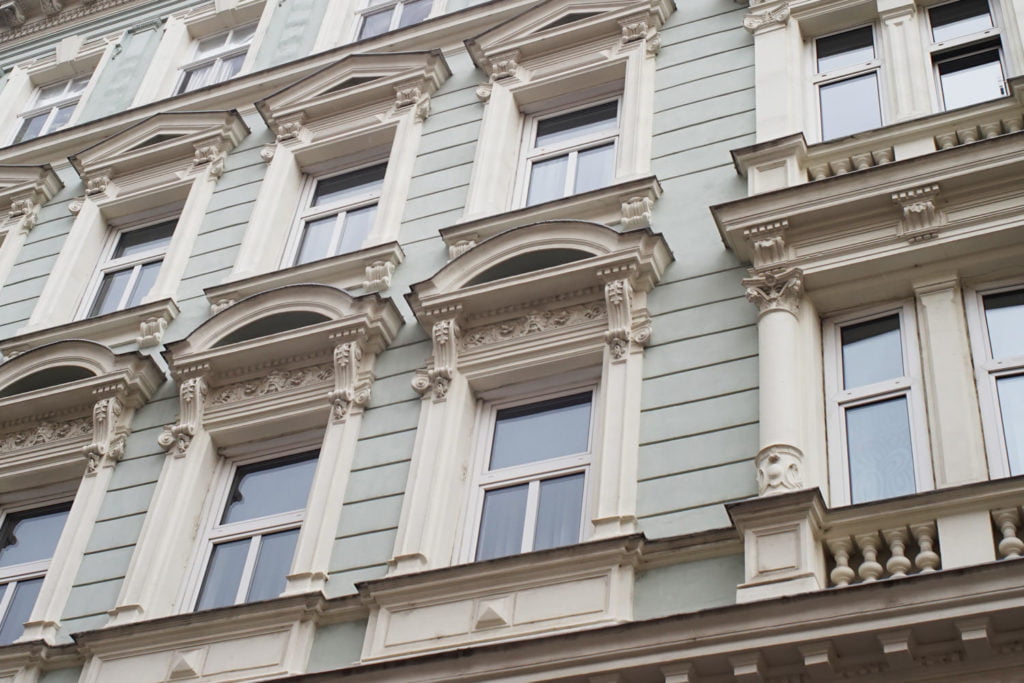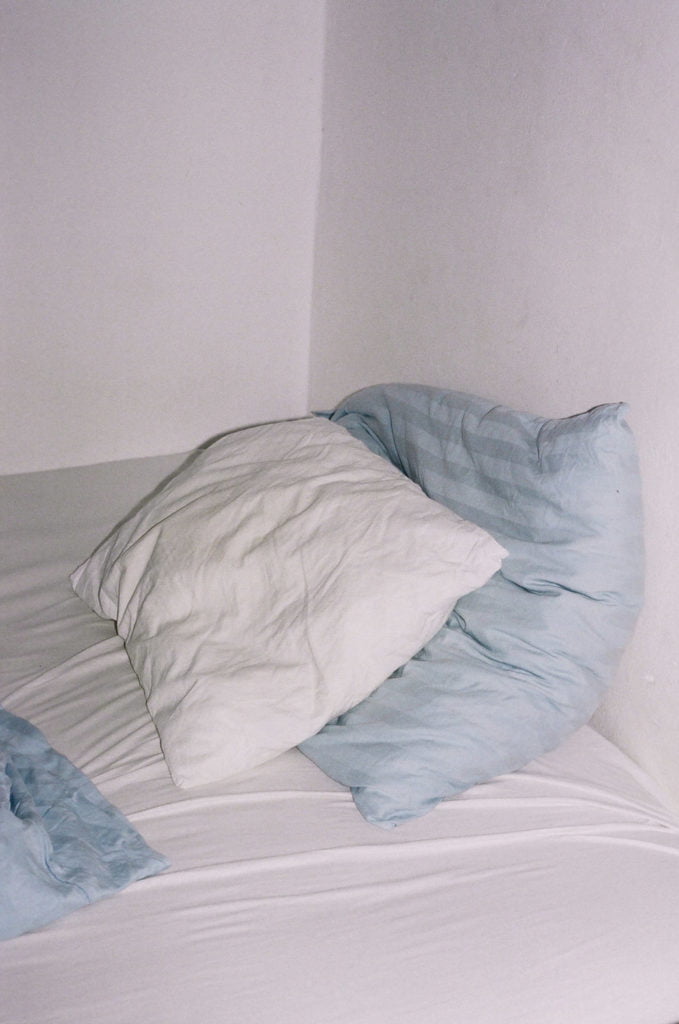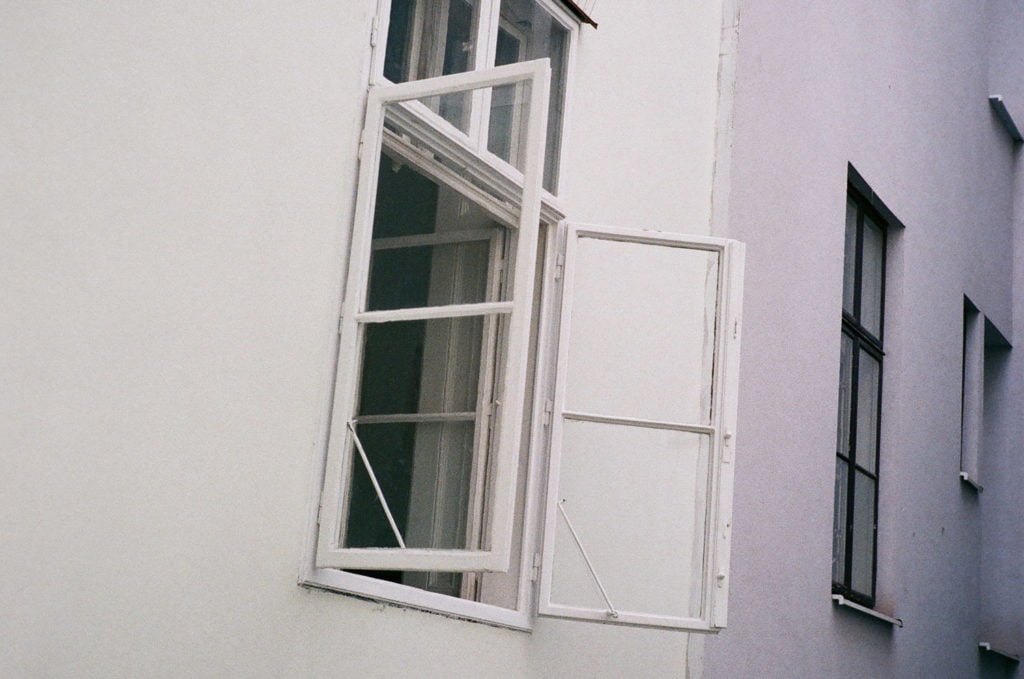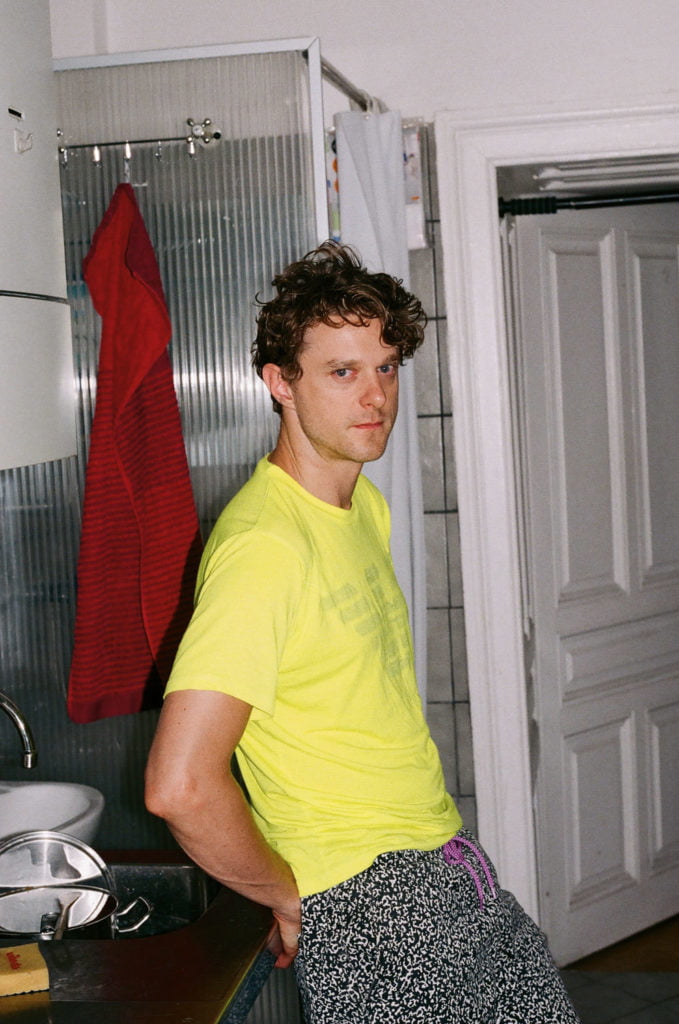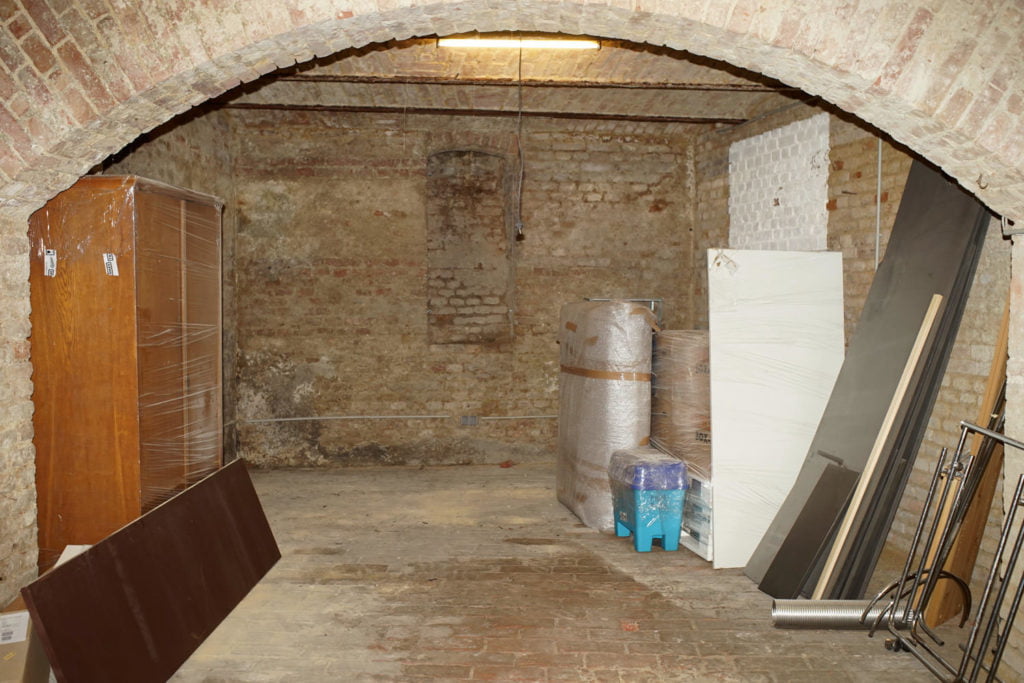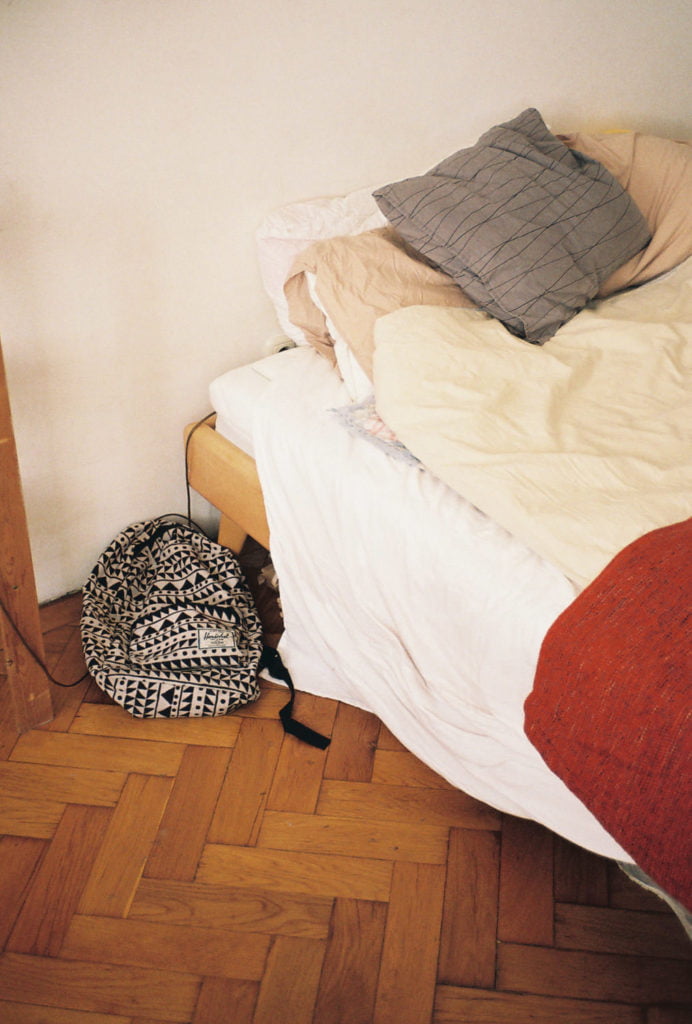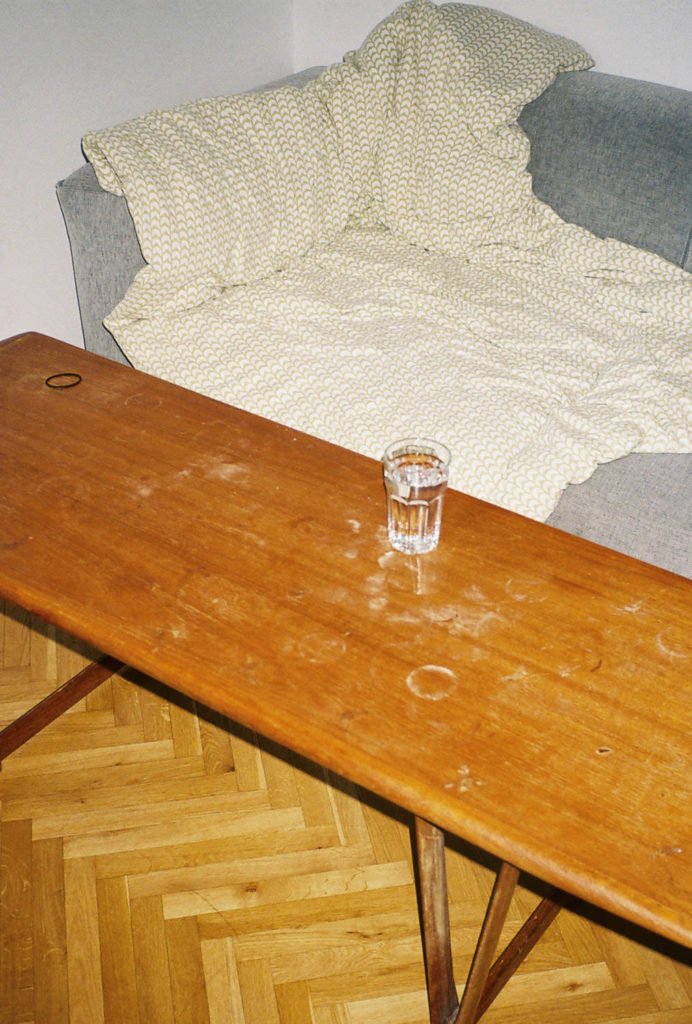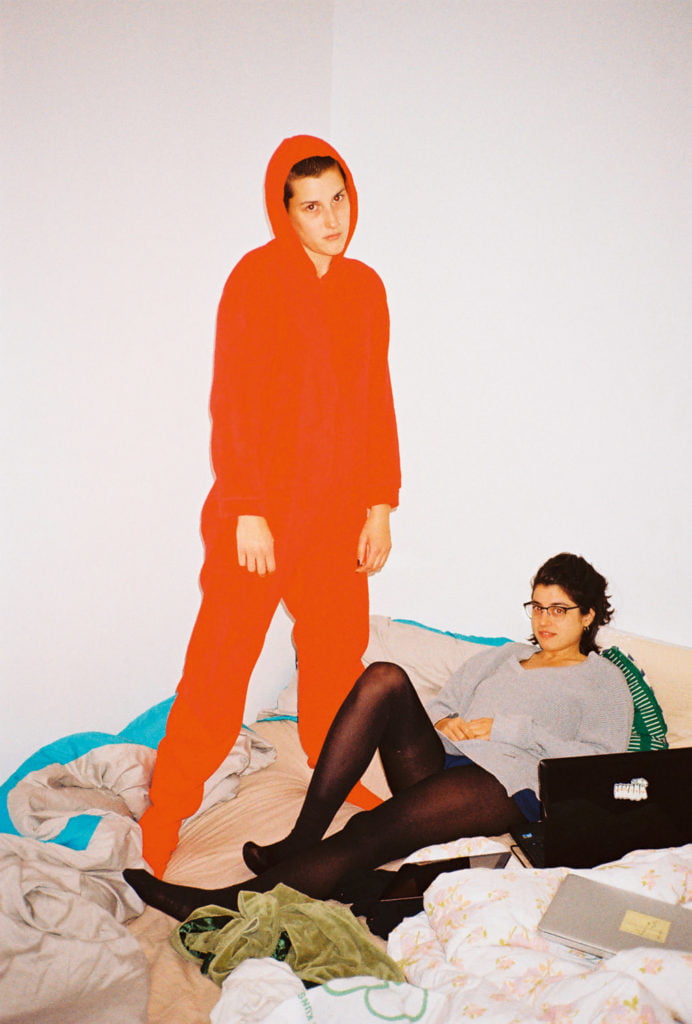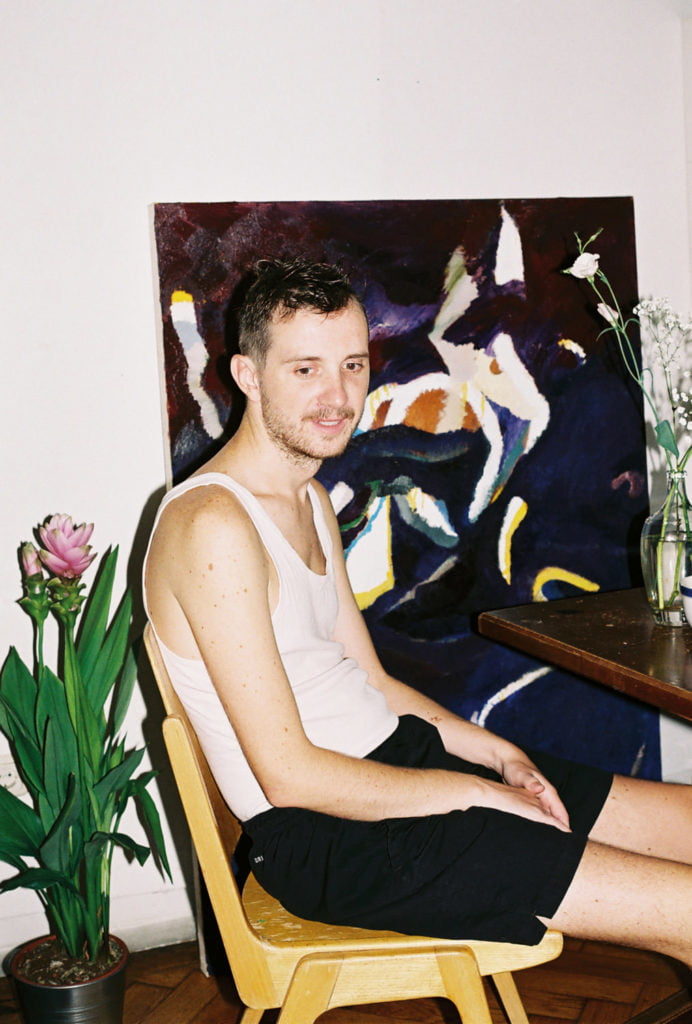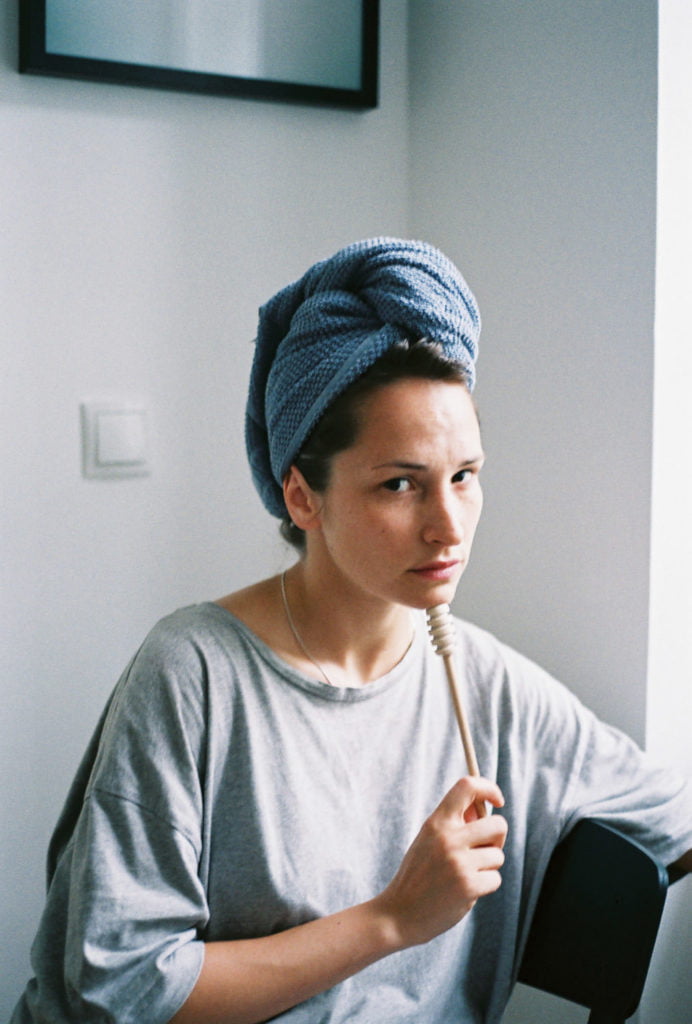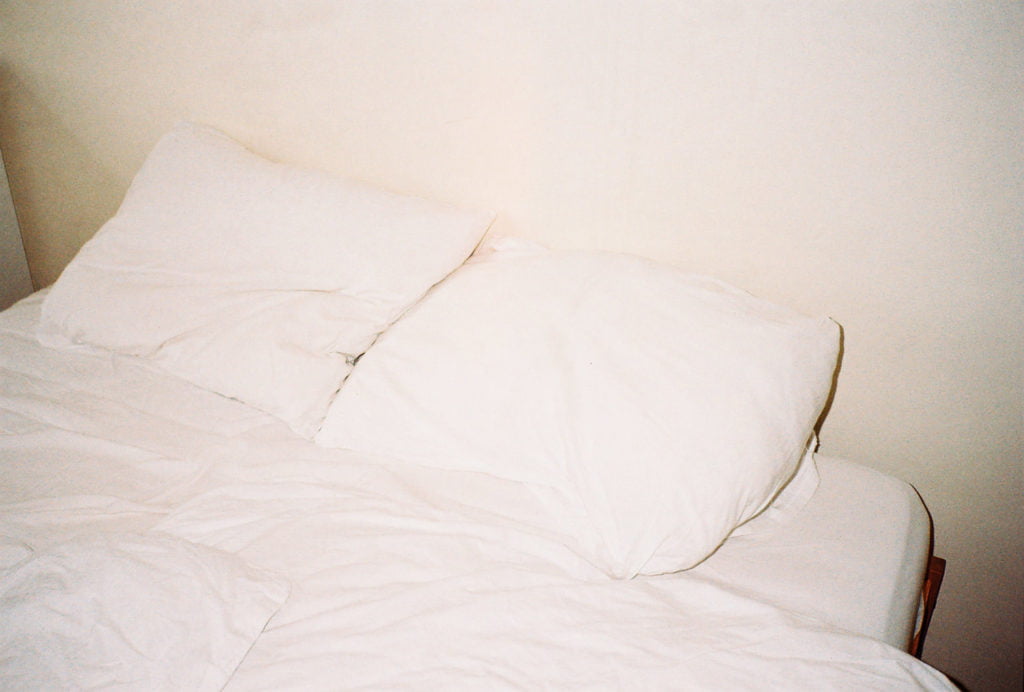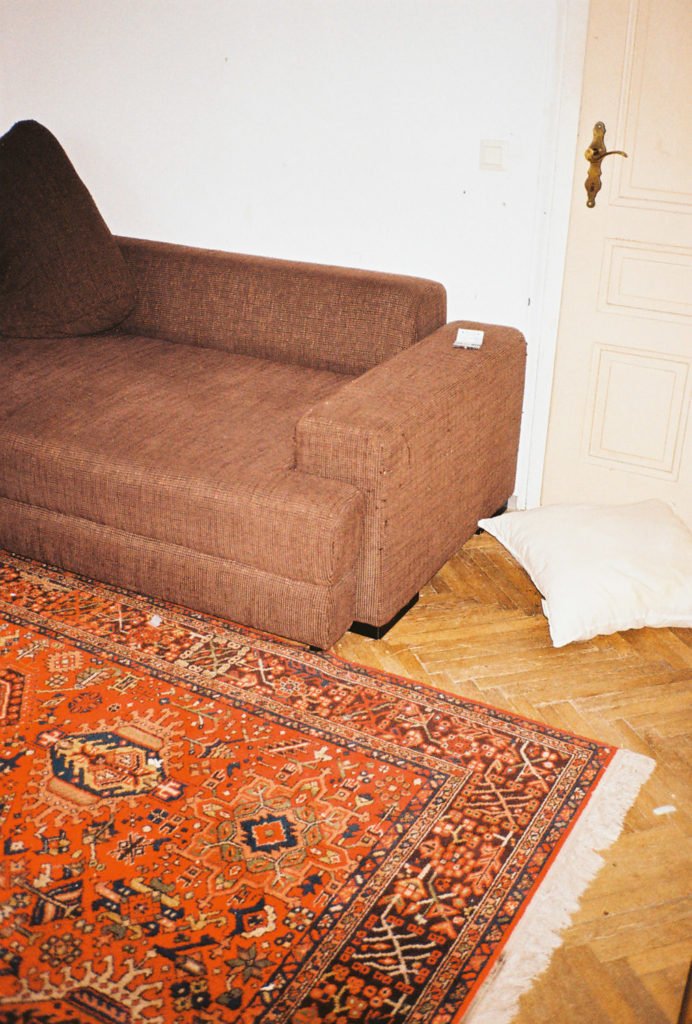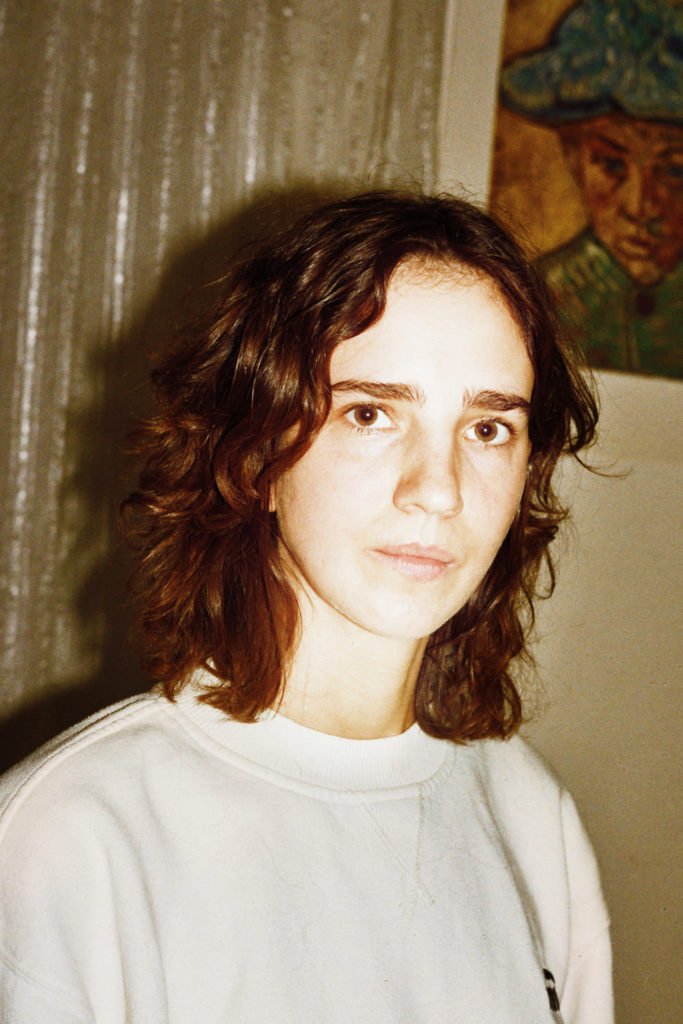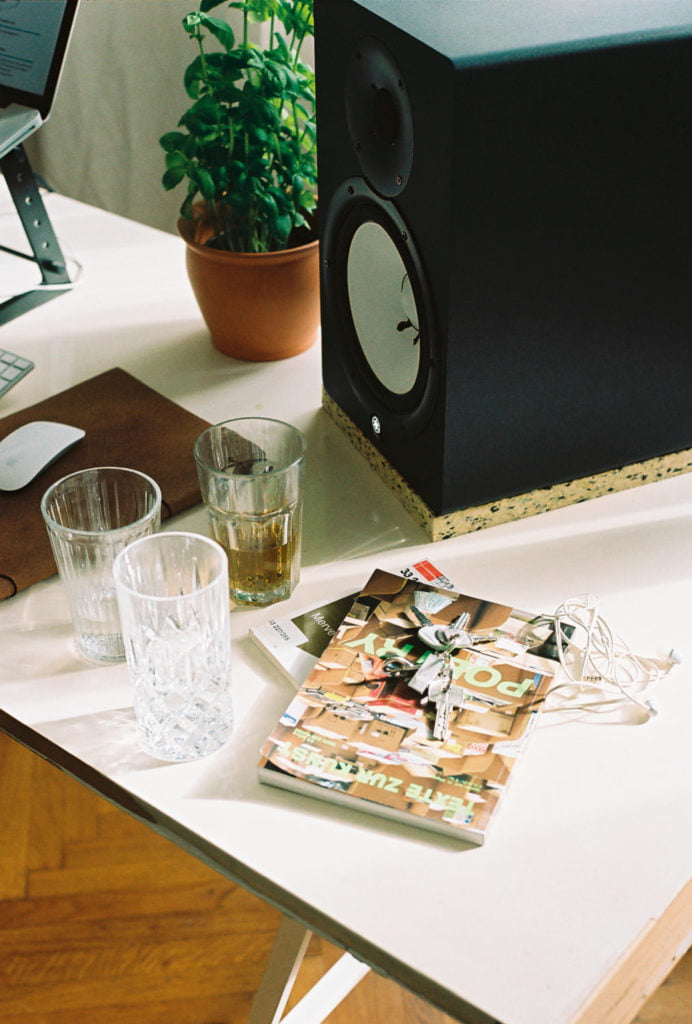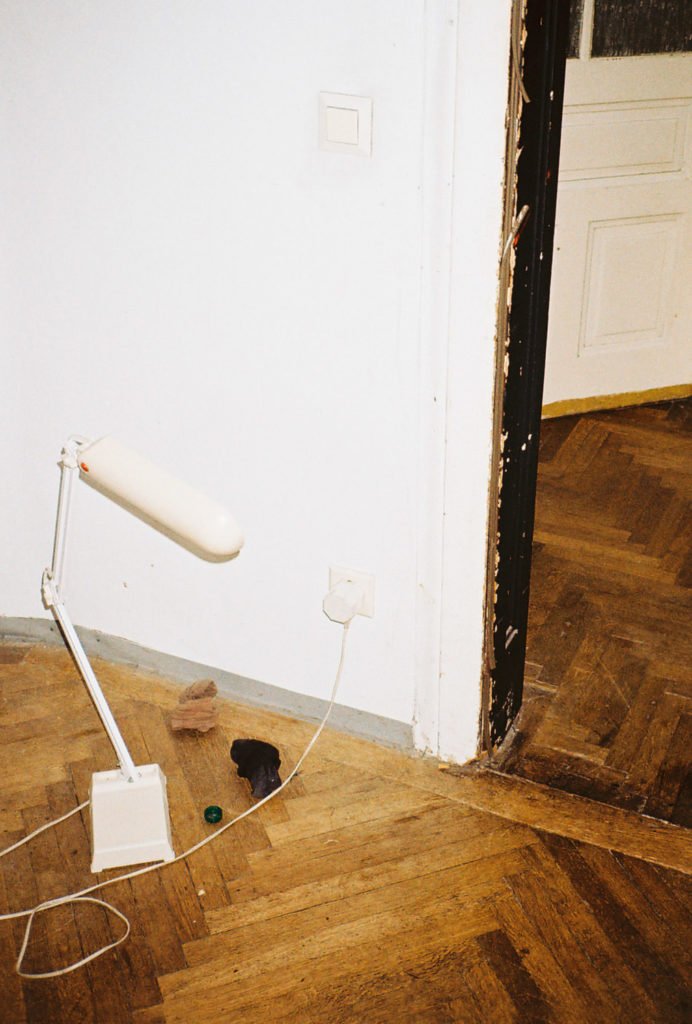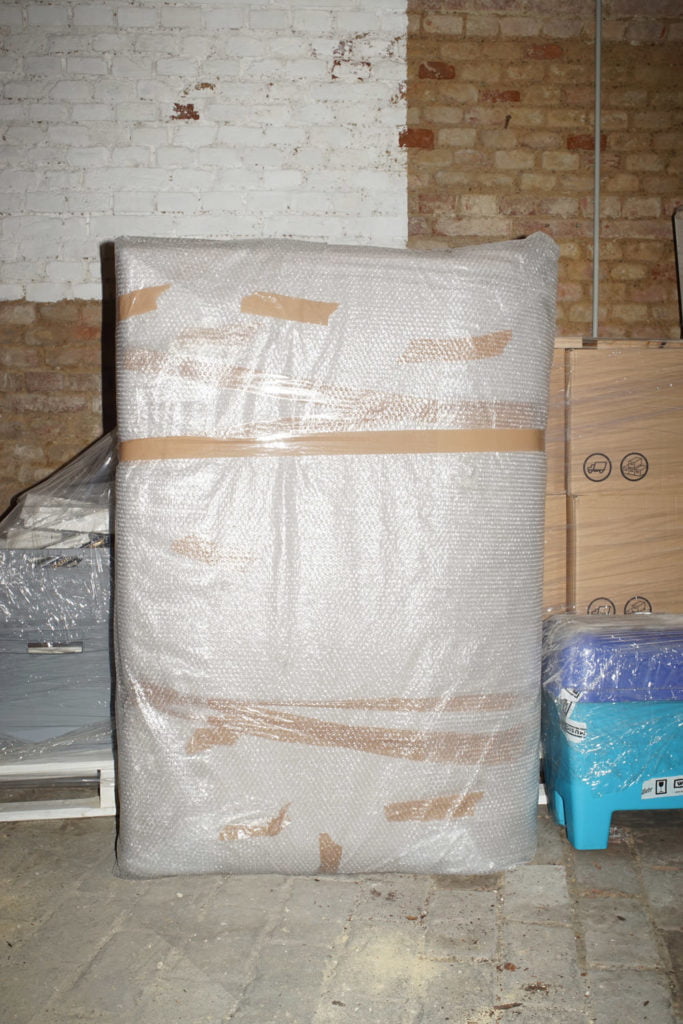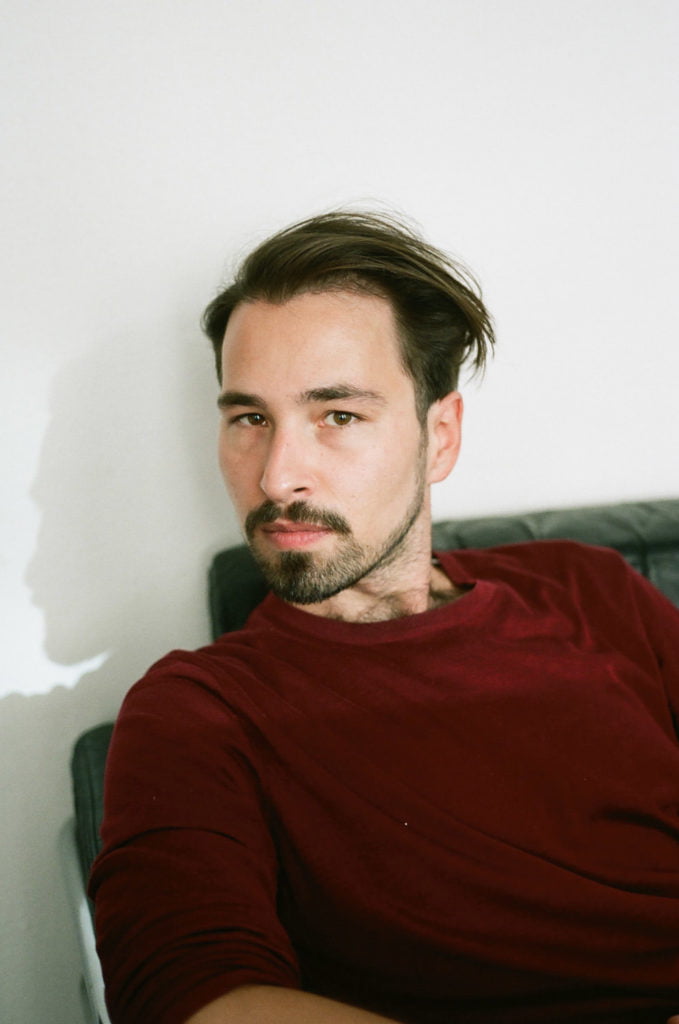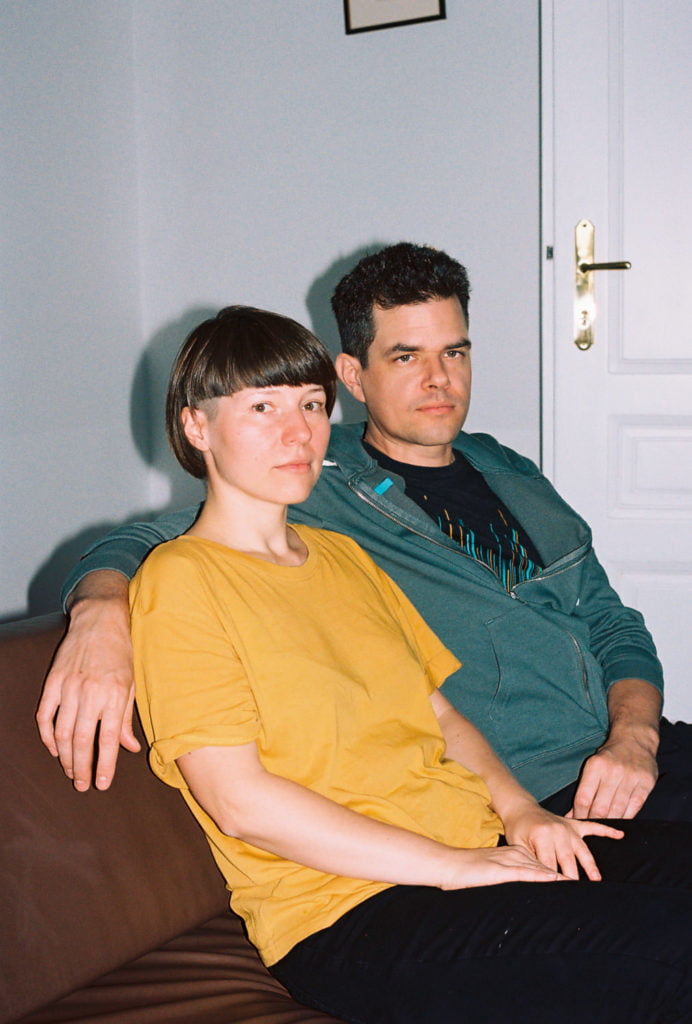Katarina Šoškić
Home No Home
The rooms I was renting are rented to some other people to spread their microcosm there, to feel settled for a while.
While far away from home, to feel at home is transitory.
It follows the rhythm of the moves, as for many, to live is to leave,
to come back, to trace them back, the moves, is an intrusive gesture of introspection – housing as a checkpoint of the mental state, not yet seen as a commodity.
Memory is a construction, as moving is a necessity.
How would ‘feel at home’ feel like, if we were all settled down?
I know no other place to come back to but to this permanent moving of mine.
During the months of July, August and September 2016, I visited or tried to visit all the flats that I used to live in or to sleep in for longer than three nights in last eight years in Vienna. This is a fragment from the series of photographs I’ve taken.
Katarina Šoškić
Katarina Šoškić is a Serbian artist who lives and works in Belgrade and Vienna. She uses photography and words to research social phenomenon, culture and subculture, impacts of tradition and history, construction of social roles and underlying psychological mechanisms.
katarinasoskic.net
Photography has always linked the private with the public, inscribed the private in the public, and vice versa. Through photographic images we’re therefore always negotiating the internal with the external, our own selves in relation to the Other, introducing descriptions and differentiations. And one of the most important differentiations in our age of crisis and conflict, of flight and of border demarcations, is undoubtedly the one that is defined through a sense of belonging, whether it’s to a particular cultural space, a religion or a value system.
Katarina Šoškić came to Vienna in 2007 to study at the University of Applied Arts.
She lived in different places, with various friends, and graduated in 2013. Then, for three years, she lived the peripatetic life of an artist in the post-Fordist knowledge society, dislocated yet consistently integrated in various networks at the same time. She returned to Vienna in 2016 to begin working on her PhD. Once again she visited the places she had lived in, the places that had once been her home, albeit temporarily. It’s an excerpt from a biography in motion, both privileged and precarious; the biography of recurrent leave-taking and re-visiting, given that all these apartments has long since been taken over by others and re-inscribed with the biographies of others – the story of a perpetual state of ‘non-home’?
Indeed, Home No Home is the title of the book in which she has structured the photographs of this biographical – not to say migrant – return. A book that remains personal, fragmentary and excerpt-like, just as the photographs remain largely excerpt- like. They offer no overview; what they depict cannot be attributed to any particular location: façade elements, windows, views of inner courtyards as typical as they are unspecific, unmade beds, tights carelessly discarded next to a table lamp on the floor, a magazine, a water glass on the coffee table in front of a sofa used for an overnight stay, a wrapped-up photograph. Nothing in these images points to a sense of permanence in living conditions; one temporary state appears to have replaced another temporary state; the non-home is followed by no home. The photographs look as if they were taken in passing, and yet they attest to a precision in representing the provisional, the ephemeral and the incidental – an order of images that is neither complete nor does it assert or claim to assert a truth, a questioning of fragile and volatile realities.
With Home No Home Katarina Šoškić ventures along an insecure boundary of the photographic along which she could slip from the concrete into the typical. And yet her photographs retain an openness for what lies beyond them, for what might also be visible. Thus they remain connected to the provisional and diverse nature of perspectives increasingly at risk of disappearing behind the images of one’s own self. And so, beneath the fragmentary surface of Home No Home characterised by its blank spaces, other images may well lie hidden, images which may be visible but remain conceivable and perceivable as a possibility.
Reinhard Braun, born 1964 in Linz; studied art history at the Karl Franzens University, Graz; lives and works in Graz. 2007 to 2010 curator for visual arts at the festival steirischer herbst. Since 2011 artistic director of Camera Austria and publisher of the magazine Camera Austria International. Current curatorial projects for Camera Austria: “Disputed Landscape” (2015), “What Was Documentary Is Now Something Else” (2015), “Shirana Shahbazi: Group Show”, “Markus Krottendorfer: At New Moon Tomorrow” and “Stephanie Kiwitt: Dialogues” (all 2016).
